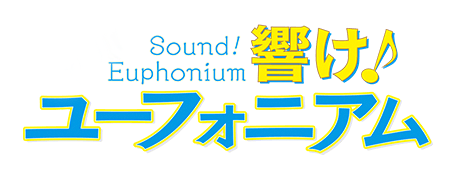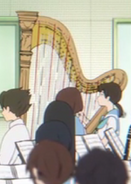The Harp (ハープ Hāpu) is a large plucked string instrument. It is believed to be one of the oldest musical instruments in the world, possibly existing as early as 3000 B.C. A typical concert pedal harp has 47 strings, as well as 7 foot pedals.
The harp is played by plucking the strings with both hands. Harp music is read the same way as piano music, the right hand typically plays the melody, and the left hand typically provides harmonic support. Unlike pianists, harpists do not use their pinkie fingers. Harps also have a wide variety of extended or exclusive techniques, one of the more known being the glissando, where a harpist glides their fingers across the strings. Glissandos are possible on other instruments too, but are very idiomatic for the harp, and therefore quite iconic.
On a pedal harp, there are 7 foot pedals, one for each note of the diatonic scale. They each have three positions, flat, natural, and sharp. Harpists will move the pedals when changing key, and also when accidentals occur. There are also other varieties of harp, like the lever harp, which uses levers to accomplish similar. In large ensembles and orchestras, pedal harps are used nearly exclusively.
Harp players are usually called harpists.
As portrayed in Sound! Euphonium[]
In Kitauji High School Concert Band, Miyoko Oono plays the harp during Liz and the Blue Bird. However, usually she is a percussionist.
Trivia[]
- Variations of the harp exist all around the world, including the Irish (Celtic) Harp, the lever harp, boat harps of Egypt, and the uncommon South American harps.
- Most harpists are women
Gallery[]
Reference[]
- ↑ Dave Black and Gerou, Tom (1998). Essential Dictionary of Orchestration. Alfred Publishing Co. ISBN 0-7390-0021-7
| Musical instruments in Sound! Euphonium | |
|---|---|
| Woodwinds | |
| Brass | |
| Strings | |
| Percussion | |
| Other | |



